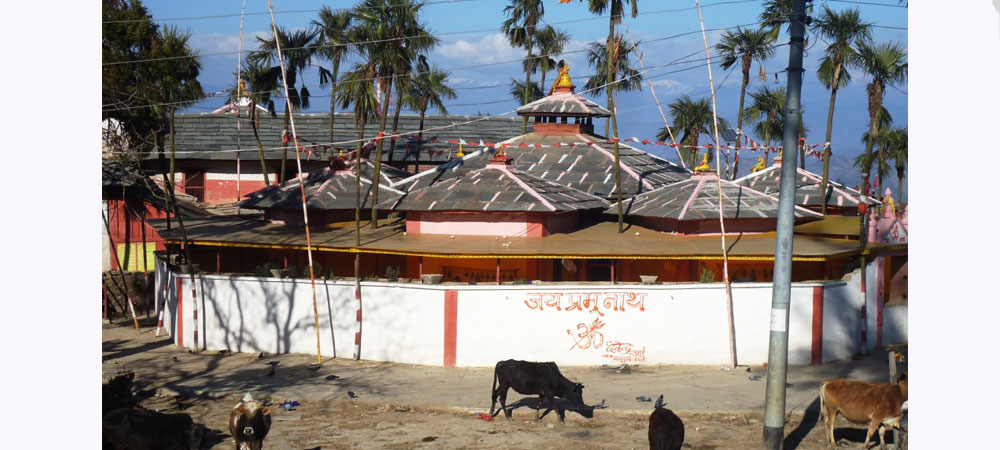
Sworgadwari meaning “doorway to heaven,” holds great significance in Hindu mythology. It is believed to be the place where the five Pandavas worshipped Lord Mahadev for the last time before ascending to heaven in the Dwapara Yuga.
Swami Hansananda, also known as Mahaprabhu discovered this holy land in Pyuthan district, Nepal, in 1951 B.S. When Mahaprabhu dug up the land and found curd mixed with rice and fire, the landlord was astonished and donated the land to him as per his request. From the day of the full moon of Baisakh in 1952 B.S., with Vedic rituals and mantra chanting, Akhand Mahayagya was started for world peace.
While Vedic mantras were being chanted, fire came out from the mouth of Brahman Tikaram Gautam. It has been burning ever since or has never died out. It is considered very miraculous and charismatic. Bibhuti (ashes) of firewood burned in the sacred fire is believed to cure various illnesses.
There are five Kundas where the five Panchangas i.e., Ganesha, Shiva, Devi, Surya, and Vishnu are worshipped three times a day according to the Vedic way. Similarly, Akhand Mahayagya, the main temple, Guptisagara(cave), Gaushala (Cowshed) and Jalkund are the special attractions here. In Akhand Mahayagya, 24 Brahmans perform the worship daily and it is performed according to the complete Vedic rituals.
The main temple is the cremation of Mahaprabhu where the Shiva Linga is also installed. The Guptisagar (cave)remains a mystery and a subject of discovery. There are 2 cowsheds here. One cowshed has 350 cows and the other has 150 cows. Since cows are known as goddesses in Hindu philosophy, cowsheds have special significance.
There were about one thousand cows in the Ashram when Mahapravu departed his physical body voluntarily in front of his disciples and followers on 2/8/17/1997 B.S. Jalakunda is believed to have originated because of Mahaprabhu. The water from this Kunda is used for worship in the temple. Also, there are Veda school (Sanskrit education), Gobardhan Parbat, Bhanji tree and many other temples.
Opened to visitors for the past six decades, Swargadwari is considered one of the top pilgrimage sites in Nepal and is also listed in the national inventory of cultural and historical heritage sites. It covers about 2,600 hectares of land and can accommodate 500 pilgrims at a time. It is believed that visiting this temple brings happiness and prosperity and fulfils wishes. In Hinduism, it is mandatory to visit all seven Dhams to reach heaven after death.
The pilgrimage to the Seven Dhams starts from Pashupatinath and ends at Sworgadwari. Therefore, its importance and dignity are great. It is worth noting that only Lord Shiva is worshipped in the temple of Pashupatinath, however, Sworgadwari is the only temple in the world that operates according to the rituals of Hindus.
Source of Sworgadwari
The main source of funding for the Sworgadwari ashram is donations from devotees. It owns 13 Ropani of land in Rolpa, 26,140 Ropani in Pyuthan, and 1050 Bighas in Dang. Unfortunately, much of the land suitable for cultivation and building houses has been encroached upon by land mafias who enjoy political protection. Currently, the ashram retains only about 30 Bighas of land in Dang. The land has been unlawfully occupied for around 27 years, with large houses being constructed on it.
The ashram has filed complaints with the administration and taken legal action to stop the encroachment, but no effective solution has been found. The lands are still being bought and sold informally.










